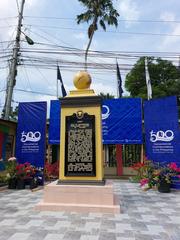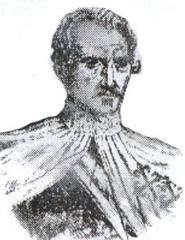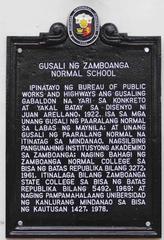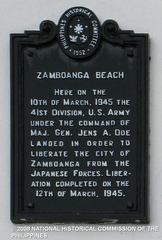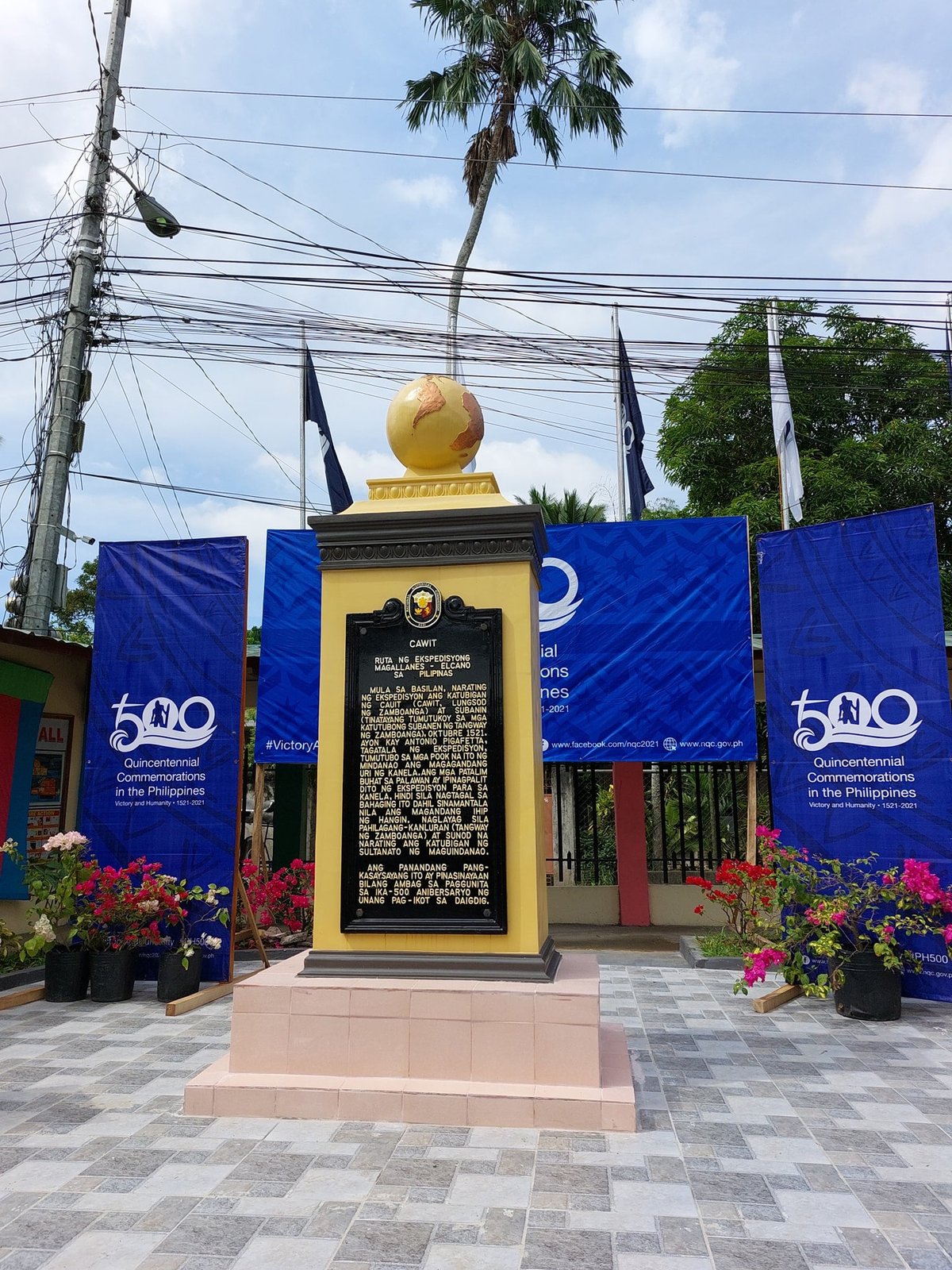
Cawit Quincentennial Historical Marker: Visiting Hours, Tickets, and Travel Guide – Zamboanga City
Date: 14/06/2025
Introduction
The Cawit Quincentennial Historical Marker in Barangay Cawit, Zamboanga City, stands as a significant testament to the Philippines’ role in one of the most important maritime events in world history—the first circumnavigation of the globe by the Magellan-Elcano expedition. This monument commemorates the fleet’s stopover in October 1521, highlighting the region’s early engagement with global exploration and trade. Today, the marker invites visitors to reflect on the Philippines’ maritime heritage and the enduring cultural crossroads that define Zamboanga City.
This detailed guide provides everything you need to know for visiting the marker: historical context, opening hours, ticketing, travel tips, nearby attractions, accessibility, and more.
Historical Overview: The Magellan-Elcano Expedition and Cawit’s Role
The Magellan-Elcano expedition, launched from Spain in 1519, was the first recorded voyage to circumnavigate the globe. After Ferdinand Magellan’s death in the Philippines, Juan Sebastián Elcano led the remaining crew onward, with the fleet reaching the Zamboanga Peninsula in October 1521 (El Museo de Zamboanga). Chronicler Antonio Pigafetta recorded the fleet’s landfall in Cawit, where local trade and cultural exchanges took place (Mindanao Examiner).
This encounter symbolizes the Philippines’ pivotal role in early global networks, placing Zamboanga City at a historical and cultural crossroads and underscoring the region’s importance in the Age of Exploration (Rappler).
The Quincentennial Marker: Symbolism, Design, and Filipino Perspective
Unveiled on December 27, 2021, the Cawit Quincentennial Historical Marker is part of a nationwide series commemorating 500 years since the Magellan-Elcano expedition’s Philippine landings (Balikbayan Magazine). Its design features:
- A pedestal topped with a scientifically accurate globe, verified by the Philippine Space Agency, representing the global impact of the voyage.
- A commemorative plaque in both Filipino and English, making the narrative accessible to both locals and international visitors.
- A dust marble relief by Filipino artists Jonas Roces and Francis Apiles, based on Derrick Macutay’s sketches, presenting the encounter from a Filipino perspective and rejecting orientalist tropes (Wikipedia: Quincentennial Markers).
The marker emphasizes not only the arrival of Europeans but also honors indigenous agency, resistance, and the resilience of local communities, particularly referencing Lapulapu’s victory at Mactan.
Cawit in Zamboanga’s Heritage
Barangay Cawit’s shoreline has long served as a landing point for traders and explorers. The area’s legacy is reflected in local oral traditions and its official designation as a barangay in 1937 (Zamboanga.com). Today, the marker connects Cawit’s residents to a global story and highlights the multicultural tapestry of Zamboanga City, home to Christian, Muslim, and indigenous communities.
Visiting Information
Location & How to Get There
- Address: Cawit Elementary School, Barangay Cawit, Zamboanga City (Mapcarta)
- Distance: 10–12 km from Zamboanga City center (approx. 20–40 minutes by car or jeepney)
- Transport: Take public jeepney, tricycle, taxi, or join a guided city tour. Private vehicles offer more comfort and flexibility (Out of Town Blog).
Visiting Hours
- Standard Hours: Daily, 8:00 AM – 5:00 PM
- Note: The marker is in a public space and physically accessible 24 hours, but daylight visits are recommended for safety and visibility.
Tickets & Admission
- Entrance Fee: Free
- Booking: No advance booking or ticket required
On-Site Facilities
- Basic amenities only; no dedicated visitor center or restrooms
- Nearby sari-sari stores for refreshments
- Well-maintained pathways; generally wheelchair accessible, but some uneven ground may require caution
Tours, Events, and Educational Activities
- Guided Tours: Available by arrangement with the Zamboanga City Tourism Office or NHCP. Local guides provide deeper insight into the historical context.
- School & Group Visits: Educational tours are encouraged; contact local authorities for arrangements.
- Special Events: Annual quincentennial commemorations and barangay fiestas in October provide a festive atmosphere.
Travel Tips and Cultural Etiquette
- Dress modestly and behave respectfully, especially at historical or religious sites.
- Ask permission before photographing locals, particularly during events or in rural barangays.
- Greet with “Selamat” in Muslim-majority areas.
- Prepare for weather: The dry season (December–May) is ideal for travel; October is lively with the Hermosa Festival.
Safety & Security
- Stay informed: Review travel advisories (Travel Like a Boss; HowSafe.net).
- Travel in groups and avoid night travel in outlying areas.
- Secure valuables and register with your embassy if possible.
Nearby Attractions
Enhance your visit by exploring:
- Fort Pilar Shrine & Museum: Spanish colonial fort and Marian shrine
- Yakan Weaving Village: Traditional textiles and crafts
- El Museo de Zamboanga: Learn about the city’s history and culture (PhilStar Life)
- Paseo del Mar: Waterfront park with local cuisine
Practical FAQs
Q: What are the Cawit marker’s visiting hours?
A: Open daily, 8:00 AM–5:00 PM. Accessible 24/7, but daytime visits are safest.
Q: Is there an entrance fee?
A: No, admission is free.
Q: How do I get there from the city center?
A: By jeepney, tricycle, taxi, or private car; approximately 20–40 minutes.
Q: Is the site accessible for people with disabilities?
A: Yes, with paved paths and ramps; some uneven terrain may require assistance.
Q: Are guided tours available?
A: Yes, through the Zamboanga City Tourism Office or local tour operators.
Q: Are there restaurants at the site?
A: No, but city center eateries are nearby. Try local dishes like Curacha, Satti, and Knickerbocker.
Visitor Recommendations
- Best time to visit: December–May (dry season); October for festival atmosphere
- Essentials to bring: Modest clothing, walking shoes, sun protection, water, ID, and a power bank
- Respect local customs and support local guides and businesses
Visuals & Digital Resources
- Include optimized images of the marker, its globe motif, and marble reliefs (alt: “Cawit historical marker visiting hours”, “Zamboanga City historical sites marker”).
- View Location on Google Maps
Broader Historical Context
The Cawit marker is part of the nationwide Quincentennial Commemorations, a movement that re-centers Filipino perspectives in the narrative of the Magellan-Elcano expedition. Executive Order No. 103 (2020) established the National Quincentennial Committee (NQC), which oversees these initiatives, including the unveiling of 34 markers across the country (NQC About; Balikbayan Magazine).
The markers celebrate not just the arrival of foreign explorers but the agency, resilience, and cultural richness of the Philippine archipelago.
Summary
The Cawit Quincentennial Historical Marker is a pivotal landmark for history enthusiasts and cultural travelers. It offers free, daily access to a site that commemorates a defining moment in both Philippine and world history. With its meaningful design and strategic location, the marker is a must-visit for anyone seeking to understand Zamboanga City’s—and the Philippines’—place in global exploration and cultural exchange. Respectful, informed travel ensures a rewarding visit and helps preserve this heritage for future generations.
Sources and Official Links
- The Magellan-Elcano Expedition: The earliest known to circumnavigate the world reached Zamboanga City in 1521
- Quincentennial marker unveiled in Zamboanga City village
- Historical marker unveiled in Zamboanga
- Cawit, route of Magellan expedition
- 34 Historical Markers to Mark the Philippines Quincentennial
- Cawit Quincentennial Historical Marker Location
- Zamboanga City Travel Guide: Asia’s Latin City
- About the NQC
- Barangay Cawit
- Zamboanga City Tourist Destinations
- Is it safe to travel to Zamboanga City?
- HowSafe.net: Zamboanga City
For more information and updates, download the Audiala app, visit the National Quincentennial Committee Official Website, and check the Zamboanga City Tourism Office.
